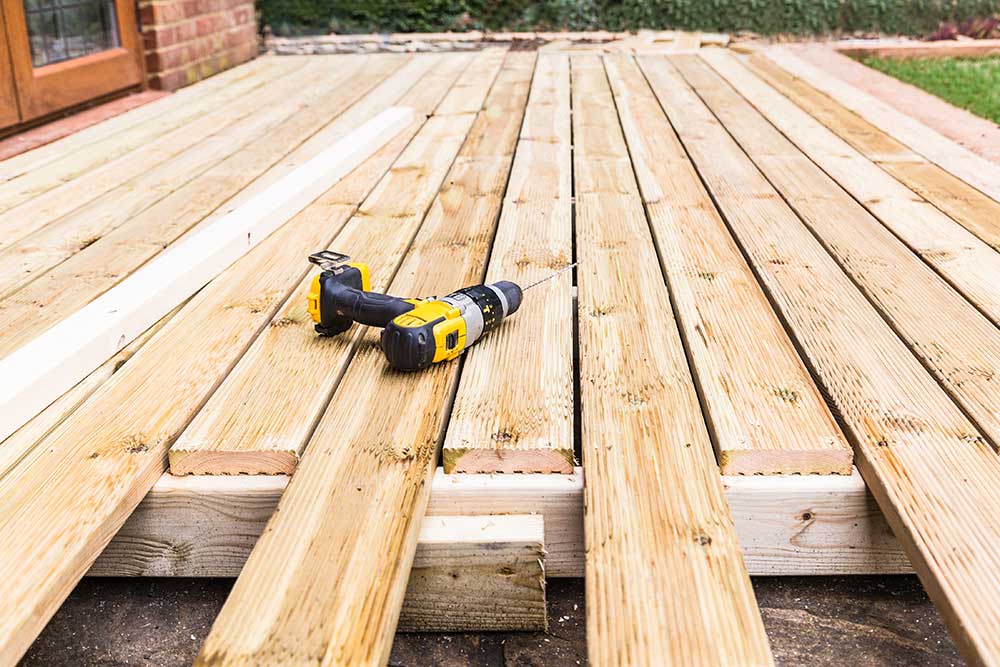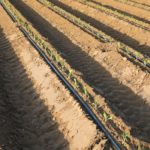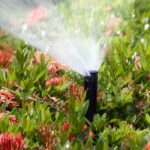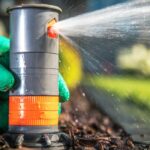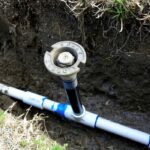If you’re considering installing a sprinkler system, one of the most important decisions you’ll have to make is how deep to bury your sprinkler lines. Getting this part right is important because burying them too shallowly can lead to cracks, leaks, or other damage.
You should bury your sprinkler lines 8-12 inches below the surface of your yard. Larger yards require deeper trenches for wider pipes, while smaller yards need shallower trenches for smaller pipes. Warm climates can support shallower depths, while freezing areas require deeper trenches.
Let’s take a closer look at how deep you bury your sprinkler lines, what tools you need, and what pipe size is best for in-ground sprinklers. Plus, we’ll give you tips on how to prep for installing a sprinkler line.
How Deep Should You Bury Sprinkler Lines?

Sprinkler lines like the ones that come with this kit (example on Amazon) or custom PVC setups should be buried 8 to 12 inches below the surface of your yard for the best results. However, the depth at which to bury sprinkler lines can vary depending on a couple of different factors.
If you live in an area with a warm climate, you can get away with shallower depths. But if you live in an area with a lot of freezing and thawing cycles, you’ll need to bury your sprinkler lines deeper to prevent them from being damaged by the shifting ground or freezing temperatures.
Larger yards will require deeper trenches to accommodate wider pipes, while smaller yards will need shallower trenches for smaller pipes. Ultimately, the best pipe size for in-ground sprinklers will depend on the specific needs of your yard and sprinkler system.
Another factor to consider is the type of soil you have. If you have sandy soil, you’ll want to bury your lines deeper than clay soil because sandy soil is more likely to shift and move around, which could cause your pipes to become damaged or displaced.
Generally, it’s always better to err on the side of caution and bury your sprinkler lines a little deeper than you think you need to, in order to protect your pipes from damage from lawn equipment or the elements, and to ensure that your sprinkler system works properly for years to come.
How to Prep for Installing a Sprinkler Line
Installing a sprinkler line is a relatively simple process, but there are a few things you’ll need to do to prepare for it.
First, you’ll need to determine where you want your sprinkler line to run, which can be tricky as you’ll need to consider things like trees, shrubs, and other obstacles. Once you’ve determined the path of your sprinkler line, mark it out with stakes and string, so you know where to dig your trenches.
Next, soak the area where you’ll be digging with water for at least an hour a day or two before you plan to dig. Doing this will help to soften the soil and make it easier to work with.
Finally, gather all the materials you’ll need for the job, including a spade or shovel, a garden hose (on Amazon), and any fittings or connectors you’ll need to connect your sprinkler line to the water supply. If installing a sprinkler line in a large yard, you might rent a power trencher instead of digging the trench by hand to save time and effort.
What Tools Will You Need to Build a Sprinkler Trench?

When installing a sprinkler system, the first step is to trench the area where you’ll place the sprinklers. Doing this requires some specialized tools, which we will outline below.
Drainage Spade
A drainage spade (also called a Sharpshooter shovel or tile spade) is a type of shovel designed specifically for digging trenches. This type of spade has a rounded blade perfect for digging trenches and a long handle to provide leverage.
The narrow blade can penetrate hard soil easily, which helps you dig a clean, precise trench.
We recommend the Emsco 1256-1 Drainage Spade (on Amazon).
Trenching Hoe
This tool is used to break up the soil and make it easier to dig trenches by hand instead of using a power trencher. A trenching hoe, like this one from Ihomepark (on Amazon), has a flat, thin blade that can chop through roots and loosen up the soil. The long handle gives you more leverage to make it easier to break up the ground.
Trenching Shovel
Trench digging shovels (on Amazon) have an area for you to step on to help drive the blade into the ground. They are ideal for digging flat trenches up to 18 inches deep.
Trench shovels, also known as clean-out shovels, come in two varieties: the shovel style and the scoop style, also known as a bottom digger. The shovel style is the more traditional of the two, with an angled handle that lets you reach the bottom of the trench to lift a good amount of soil up and out without spillage.
The scoop style is the more modern of the two and uses a pull-and-lift action to collect and remove the loose soil from the bottom of the trench, making it much faster, more ergonomic, and less likely to cause back injuries than the shovel type.
What’s the Best Pipe Size for In-Ground Sprinklers?
When installing in-ground sprinklers, the pipe size is the most important factor. The wrong size pipe can cause problems with your sprinkler system, including low water pressure, reduced coverage, and even flooding.
The best pipe size for in-ground sprinklers depends on several factors, including the following:
- Overall size of your yard
- Number of sprinkler heads
- Water pressure available
- Type of sprinkler heads being used
Most standard PVC sprinkler pipes have a diameter of 1.5-2 inches, which is usually sufficient for most yards and sprinkler systems. However, if you have a larger yard or more sprinkler heads, you may need a wider pipe to accommodate the increased water flow. On the other hand, you may get away with a narrower pipe if you have a small yard or fewer sprinkler heads.
If you’re unsure what size pipe to use for your in-ground sprinkler system, it’s best to consult a professional before beginning the installation to help you determine the best pipe size and avoid potential problems with your sprinkler system.

